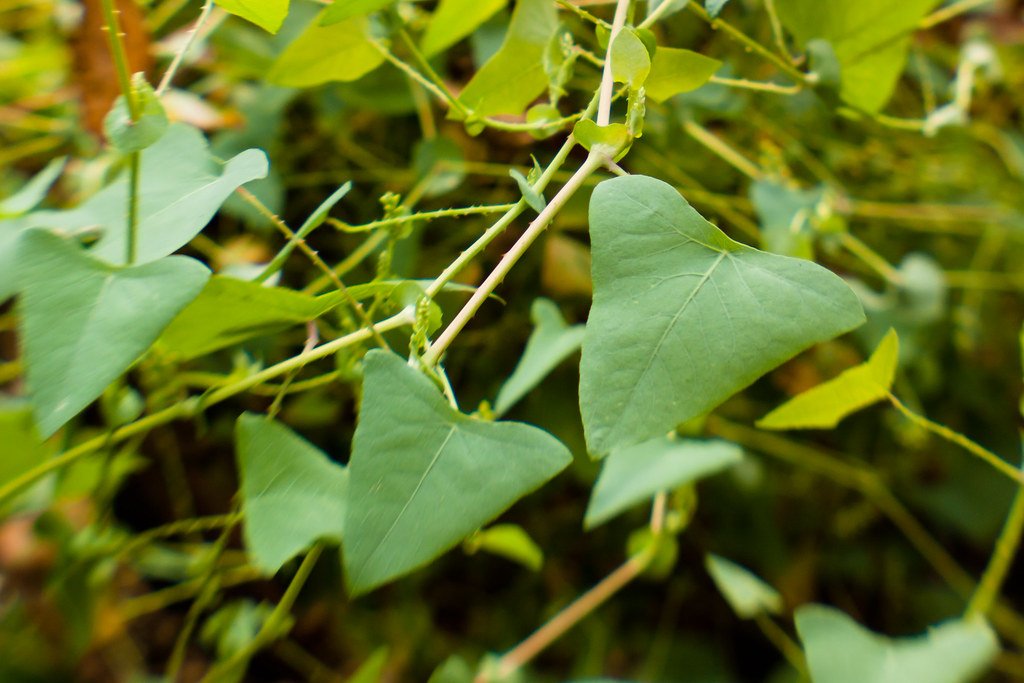Imagine a plant so aggressive it can literally smother an entire forest in just one growing season. Picture a weed that grows six inches every single day during peak conditions, climbing over everything in its path like something out of a nightmare. This isn’t science fiction – it’s the reality of mile-a-minute vine, one of nature’s most devastating invaders that’s quietly destroying ecosystems across the United States. While most people remain completely unaware of its existence, this Asian immigrant is reshaping our forests, meadows, and waterways in ways that scientists are only beginning to understand.
The Birth of a Monster: How Mile-a-Minute Arrived in America
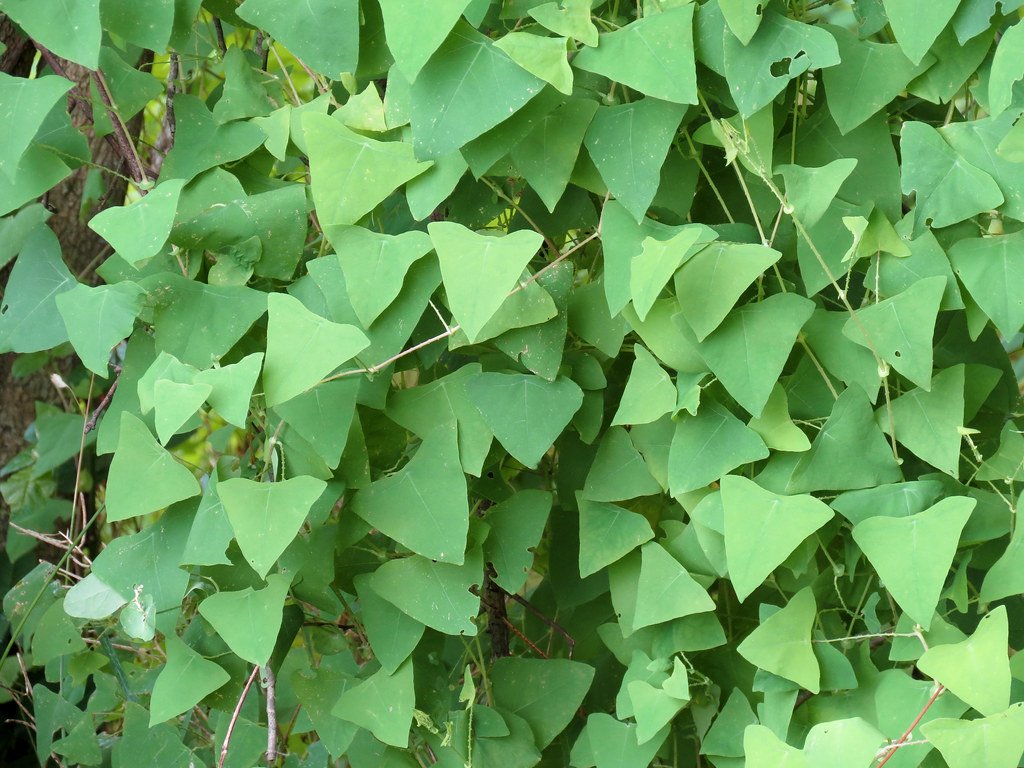
Mile-a-minute weed was accidentally introduced via contaminated holly seed into York County, Pennsylvania in 1930. It’s almost poetic that such a small mistake – just some contaminated seeds – could unleash such ecological chaos. Originally from India and East Asia, this species was first reported in York County, Pennsylvania, in the 1930s in contaminated nursery soil. The plant sat quietly for decades, slowly establishing itself before anyone realized what was happening. What makes this story even more fascinating is that earlier attempts at introduction failed completely – the first records in North America are from Portland, Oregon (1890), and Beltsville, Maryland (1937), but both of these sites were eliminated or did not establish permanent populations. But Pennsylvania proved to be the perfect launch pad for this botanical invader.
The Science Behind Six-Inch-a-Day Growth
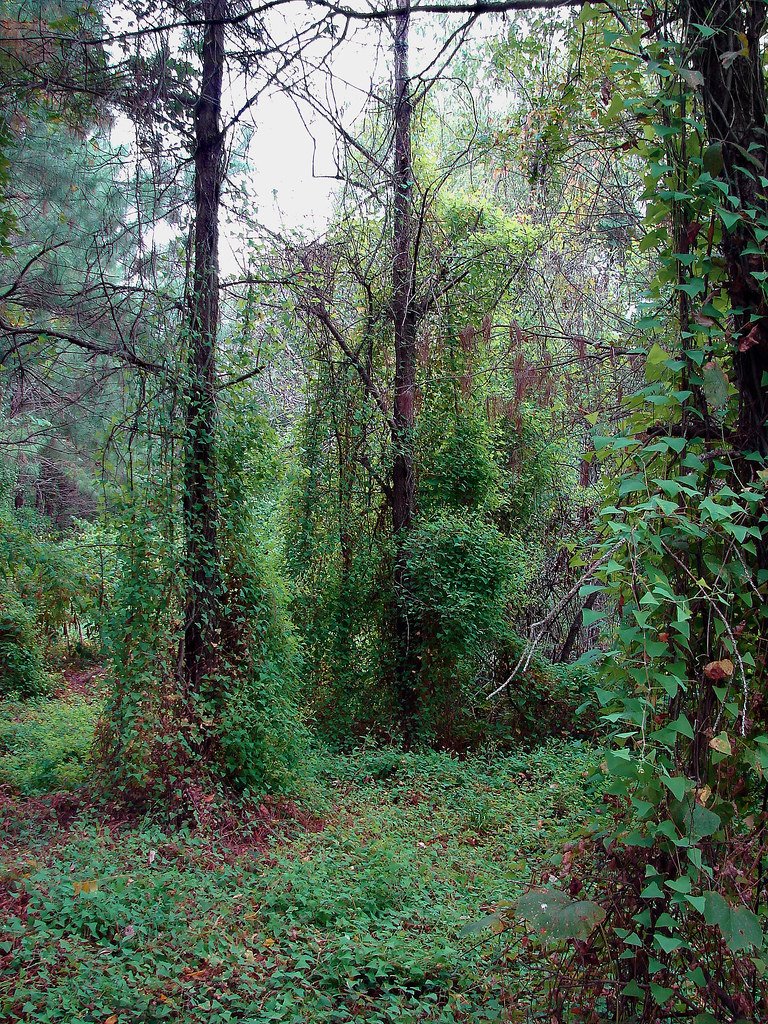
The name “mile-a-minute” isn’t just catchy marketing – it’s based on real, measurable science that would make any gardener jealous. Growing up to six inches per day, mile-a-minute weed forms dense mats that cover other plants. Think about that for a moment: while your prized tomatoes are struggling to gain an inch in a week, this vine is adding half a foot to its length every 24 hours. A rapid growing herbaceous annual vine that can grow to be 20′ tall with support from nearby vegetation. It has delicate reddish stems that are covered with barbs. The plant’s secret weapon isn’t just speed – it’s also equipped with backward-hooked barbs that act like natural grappling hooks, allowing it to climb over virtually any obstacle.
Nature’s Perfect Climbing Machine
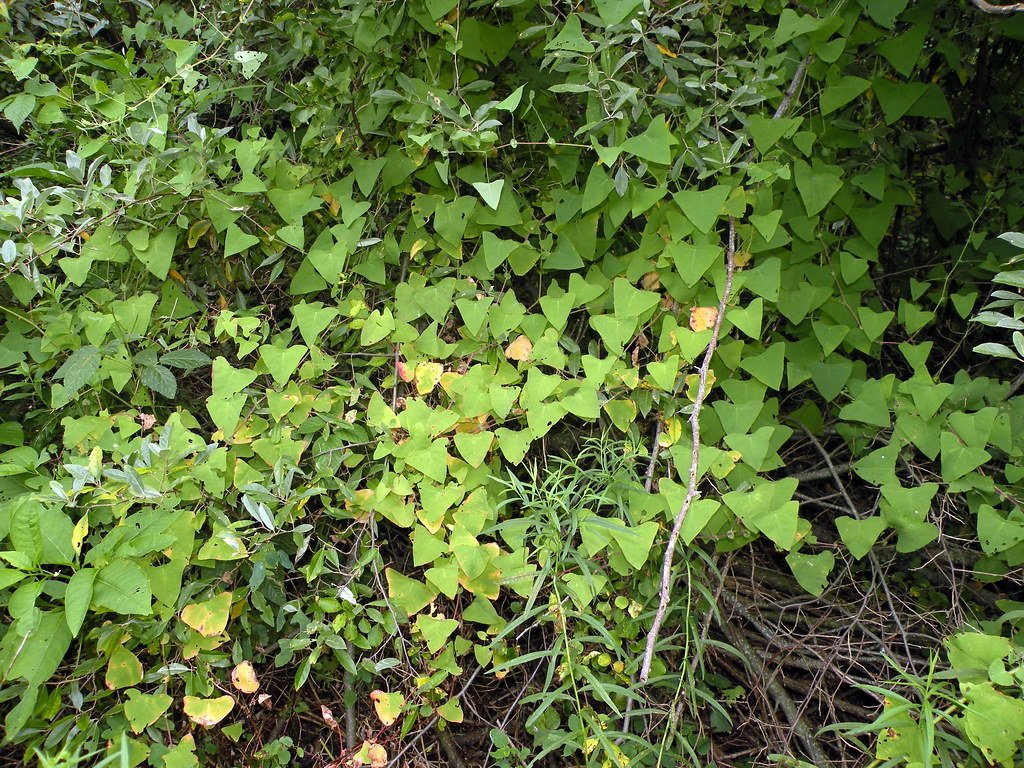
Mile-a-minute vine has evolved into what can only be described as nature’s perfect climbing machine. The vines and the undersides of leaves are covered with recurved barbs that aid in its ability to climb. These aren’t gentle hooks – they become sharper and more dangerous as the plant matures, creating what feels like biological barbed wire. Barbs become sharper as the plant matures. The plant uses these hooks to literally drag itself up and over other vegetation, creating what scientists call a “climbing habit” that allows it to reach sunlight while smothering everything beneath. It’s like watching nature’s own version of a horror movie where the villain just keeps growing stronger.
The Triangular Leaf Mystery
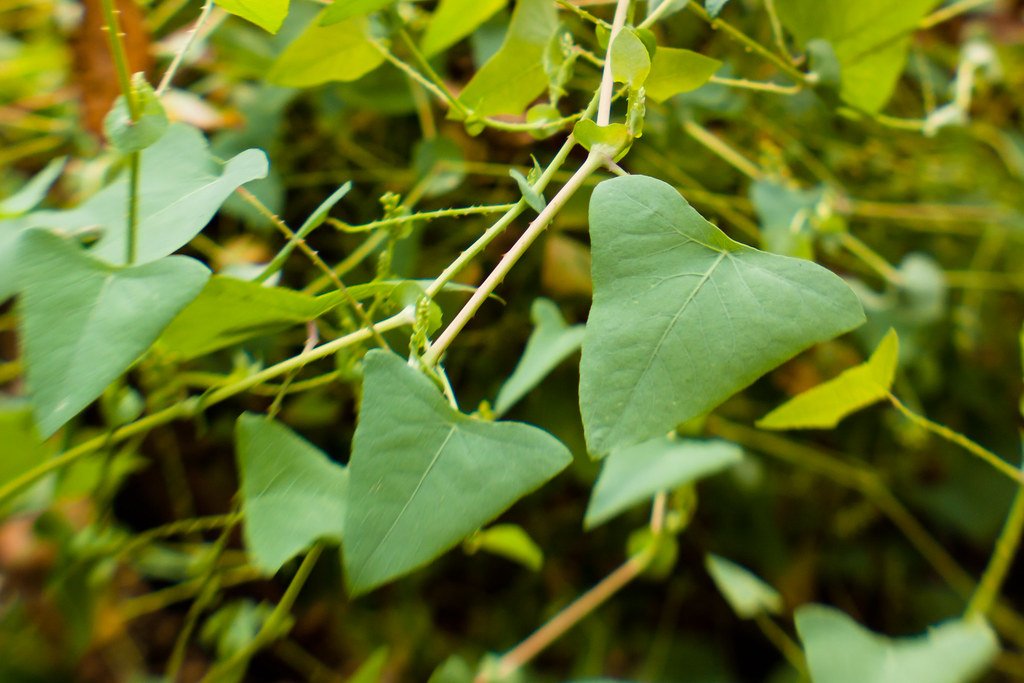
One of the most distinctive features that sets mile-a-minute apart from other vines is its unusual triangular leaves. Leaves are an equilateral triangle with three sides that are all the same length. They are simple, alternate and light green. These aren’t just any triangles – they’re perfect equilateral triangles, like someone took geometry class and applied it to botany. Its leaves are alternate, light green, 4 to 7 cm long and 5 to 9 cm wide, and shaped like an equilateral triangle. This geometric precision makes the plant surprisingly easy to identify once you know what to look for, though most people walk right past it without a second glance.
Seeds That Float Like Tiny Life Rafts

The plant’s reproductive strategy reads like something from a survival manual. Mile-a-minute weed seeds can float for seven to nine days, which allows for long distance movement in water. This movement can be amplified during storms when vines hanging over waterways drop their fruit into fast moving waters, which then spread the seeds throughout a watershed. Picture thousands of tiny blue seeds floating down rivers like miniature life rafts, each one capable of starting a new invasion miles away from its parent plant. The fruit is buoyant for up to 9 days. During major storms, a single vine can potentially seed hundreds of square miles of watershed – it’s like nature’s own version of biological warfare.
The Six-Year Sleeper Cell Strategy
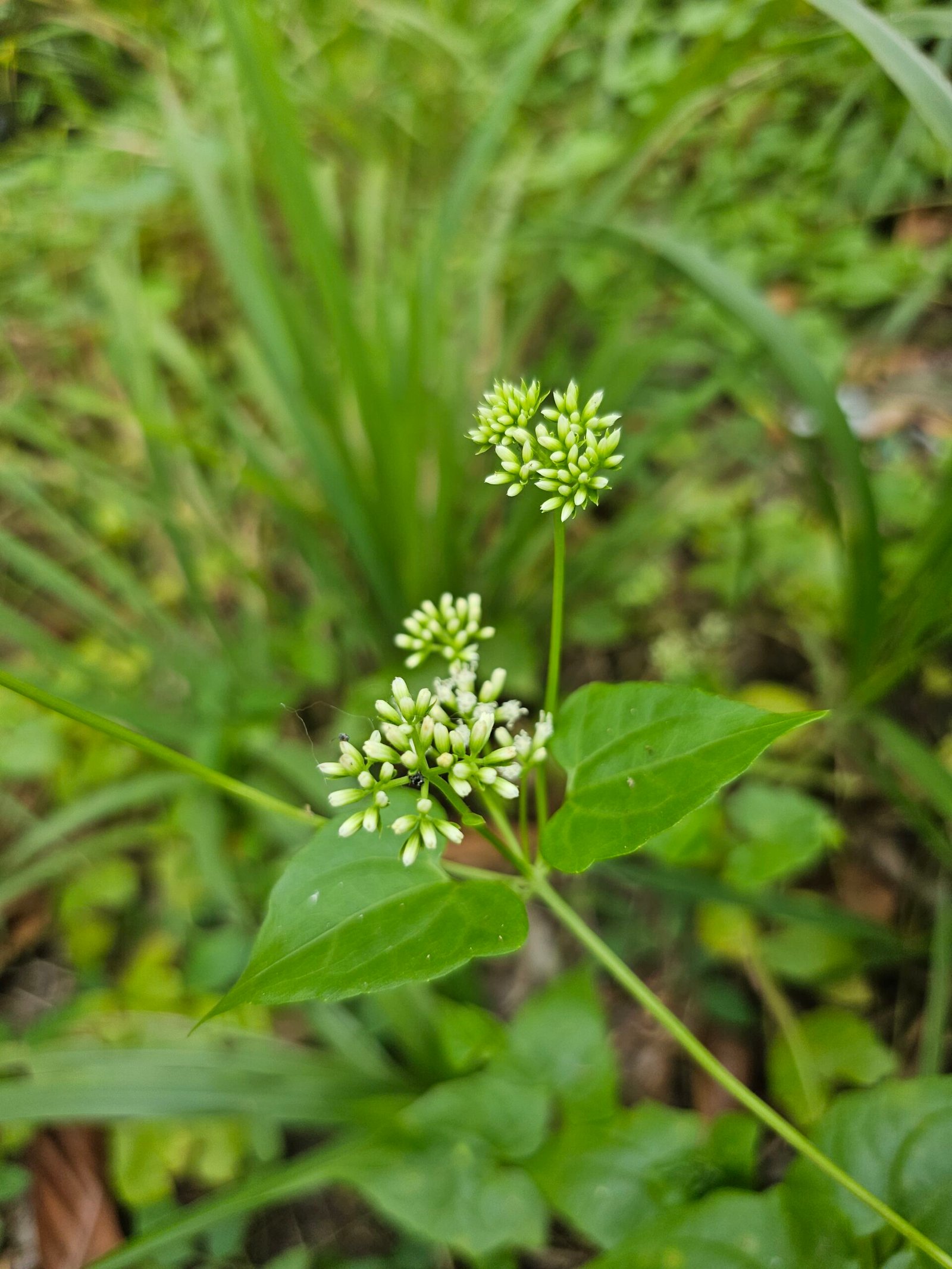
What makes mile-a-minute truly terrifying is its patience. Seeds can be viable in the soil for up to six years and can germinate at staggered intervals. This means that even if you successfully remove every visible plant from an area, you’re still sitting on a biological time bomb that could explode for the next six years. Seeds can remain viable for at least six years. Seeds germinate in early April. It’s like the plant has learned military strategy – even when you think you’ve won the battle, dormant seeds are waiting underground like sleeper cells, ready to activate when conditions are right.
A Self-Sufficient Reproduction Machine

Unlike many plants that depend on bees, butterflies, or other pollinators, mile-a-minute has achieved reproductive independence. Mile-a-minute weed is primarily a self-fertile plant and does not need any pollinators to produce viable seeds. This reproductive self-sufficiency means the plant doesn’t have to wait around hoping some bee will show up – it can create viable offspring all by itself. Its ability to flower and produce seeds over a long period of time (June through October) make mile-a-minute weed a prolific seeder. From early summer until the first frost, the plant is essentially a seed-production factory running at full capacity.
The Metallic Blue Fruit That Fools Everyone
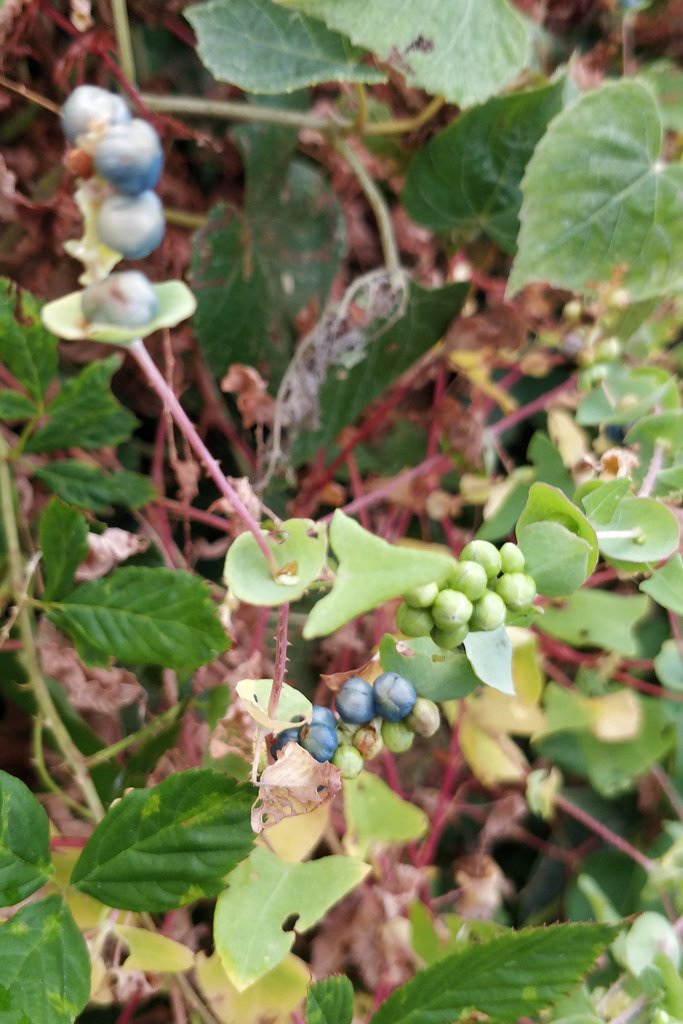
One of the most deceptive aspects of mile-a-minute is how attractive its fruit appears to wildlife and humans alike. Fruit emerges green, changes to purple, then matures to striking metallic blue fleshy, berry-like fruit produced from early summer until frost. About 0.25 in across and appearing in a long cluster at the vine’s tips. These metallic blue berries look almost jewel-like, shimmering in the sunlight like nature’s own sapphires. The fruit is eaten and seeds are distributed by birds, deer, and small mammals. The plant has essentially turned local wildlife into unwitting accomplices in its invasion, using their digestive systems as long-distance seed dispersal vehicles.
The Chokehold Effect on Native Forests
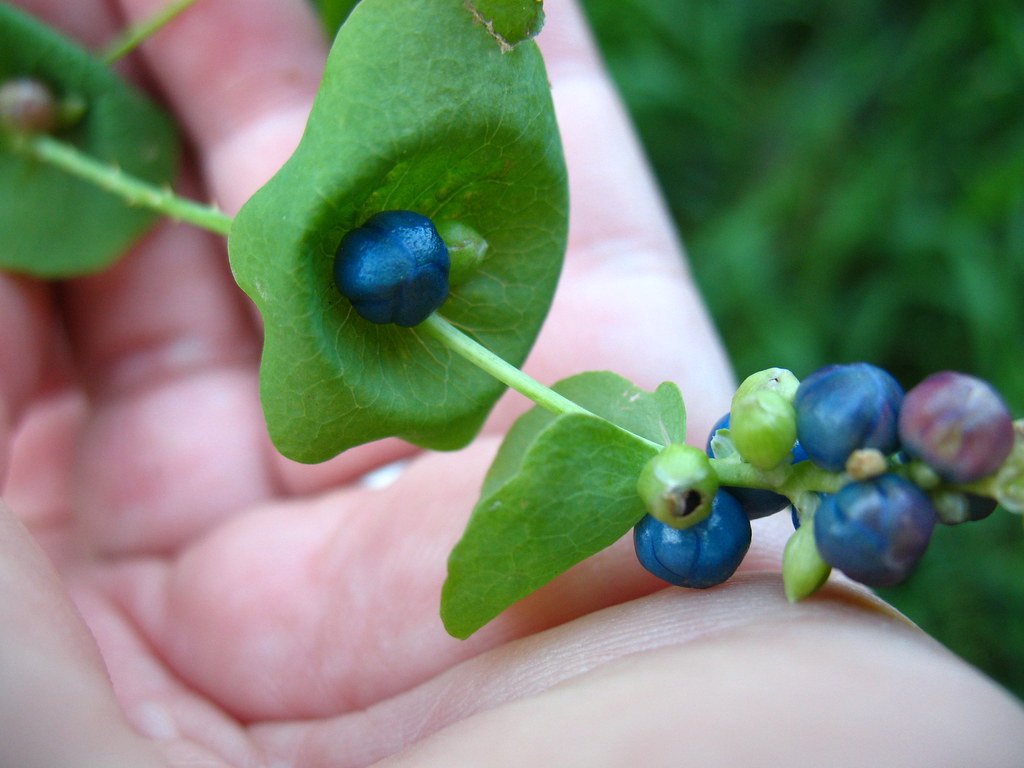
The impact of mile-a-minute on forest ecosystems is nothing short of catastrophic. Mile-a-minute grows rapidly, producing a thick tangle of vines over herbaceous and woody plants and even scrambling up into trees. Thick tangles block sunlight and limit photosynthesis which eventually kills covered plants. Imagine walking through a forest where every tree, every shrub, every wildflower is wrapped in a green stranglehold, slowly suffocating under the weight of invasive vines. Sunlight is blocked, thus decreasing the covered plant’s ability to photosynthesize; and the weight and pressure of the mile-a-minute weed can cause poor growth of branches and foliage. The smothering can eventually kill overtopped plants. It’s ecological murder in slow motion.
Economic Devastation Beyond the Forest
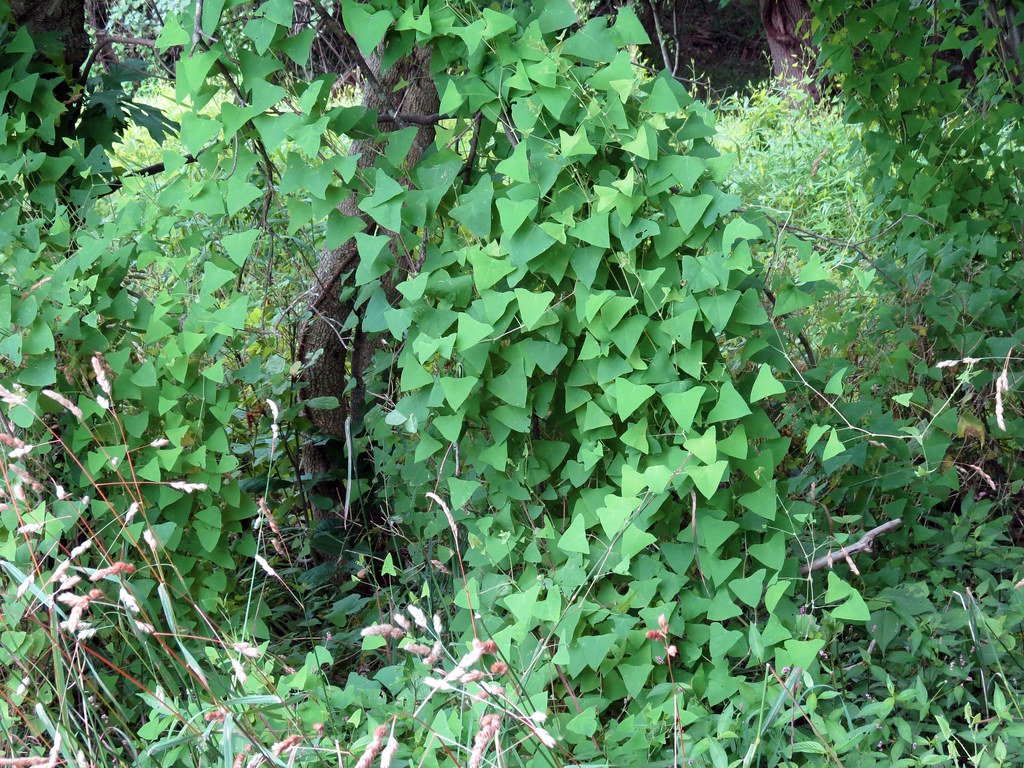
The economic impact of mile-a-minute extends far beyond just environmental damage. Mile-a-minute weed can also be a major pest in Christmas tree plantations, reforestation areas and young forest stands, and landscape nurseries. Christmas tree farmers – an industry worth hundreds of millions of dollars – find their crops literally strangled by these invasive vines. Young trees that represent years of investment and careful cultivation can be destroyed in a single growing season. Its fast growth and ability to out-compete other native species make mile a minute a threat to forest regeneration and commercial forest areas. Reforestation projects costing thousands of dollars per acre can be completely wiped out, forcing land managers to start over from scratch.
The Weevil Warrior: Nature’s Tiny Hero

In 2004, scientists deployed what might be one of the most precise biological weapons ever created. Originally from Asia, Rhinoncomimus latipes was intentionally introduced in North America in 2004 to control mile-a-minute. This tiny black weevil, no bigger than a grain of rice, represents years of careful research and testing. Rhinoncomimus latipes is highly co-evolved with its host plant and has only been found to successfully reproduce on mile-a-minute. The weevil is so specialized that it literally cannot survive on any other plant – it’s like a biological heat-seeking missile programmed to target only mile-a-minute. The weevil established at all three sites and produced three to four generations before entering a reproductive diapause in late summer.
How the Weevil Wages War
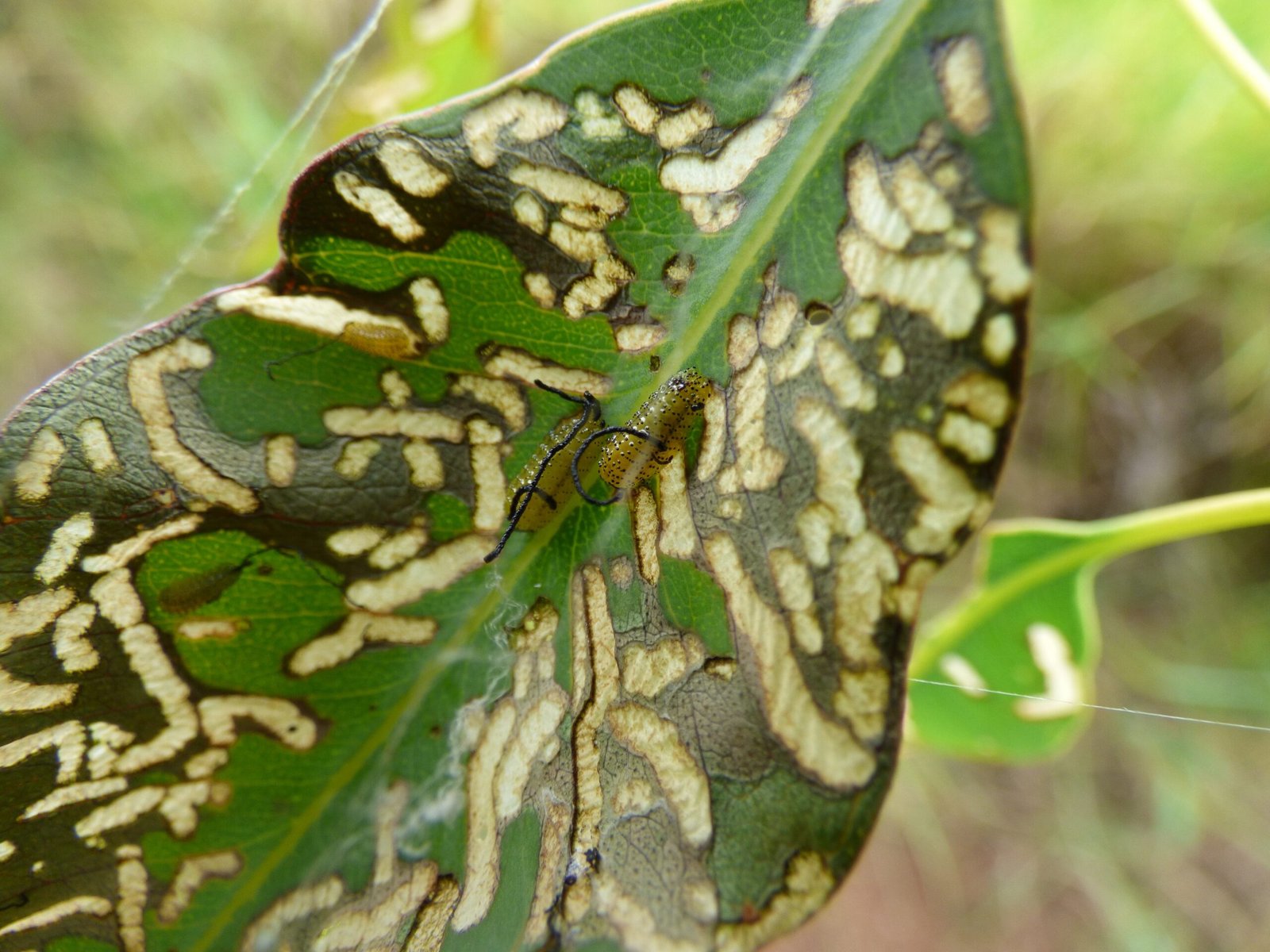
The mile-a-minute weevil’s attack strategy is both elegant and devastating. Female R. latipes lay eggs preferentially on the compact flowering head of the plant, a tender location that allows larvae to easily bore into the stem. After 3-5 days, larvae emerge and bore into the stem to feed and develop. The larvae essentially become internal saboteurs, eating the plant from the inside out. Stem boring and internal feeding by larvae significantly reduces the growth and reproductive ability of P. perfoliata. While the weevil can’t completely eliminate mile-a-minute, it can reduce the plant’s growth rate by up to 75% – transforming a monster into something more manageable.
The Slow March of Biological Control
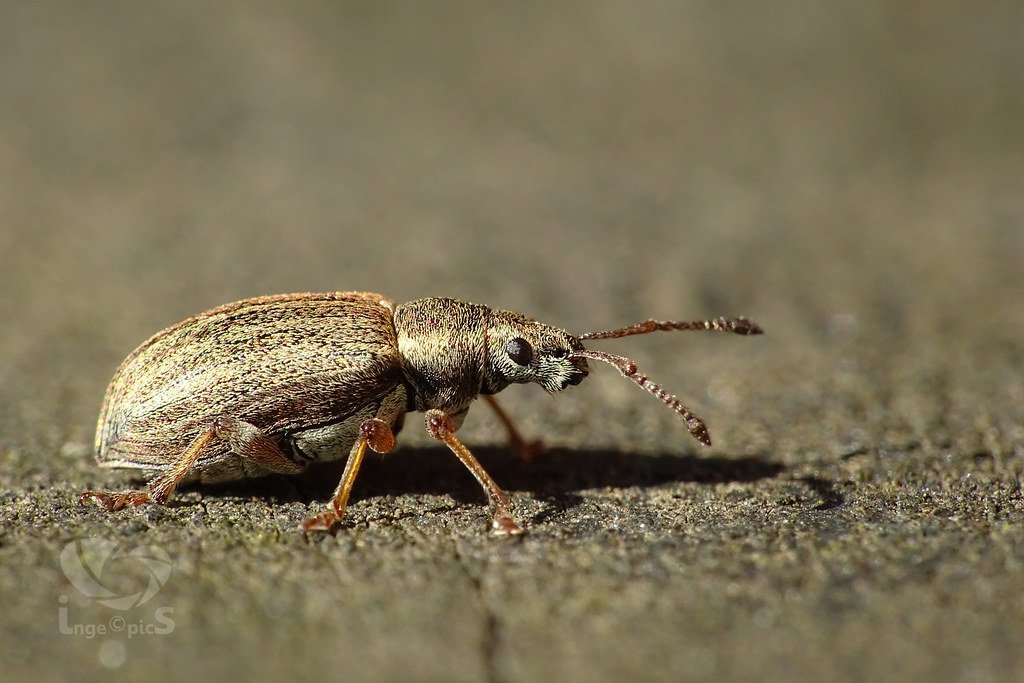
Despite its effectiveness, the weevil army moves frustratingly slowly across the landscape. Rhinoncomimus latipes has been effective thus far at controlling mile-a-minute populations where it has been released, strongly preferring mile-a-minute as a host to nontarget native plants, but travels slowly. R. latipes has a dispersal rate of approximately 4.3 km/yr from release points. At this rate, it would take decades for the weevils to naturally spread across all infested areas. Scientists are now working on ways to accelerate this process, essentially creating weevil delivery systems to get these biological warriors to the front lines faster. Mile-a-minute cover decreased at the site with the highest weevil density. The production of P. perfoliata seed clusters decreased with increasing weevil populations at two sites, and seedling production declined over time at two sites by 75% and 87%.
The Hidden Danger of Disturbed Landscapes
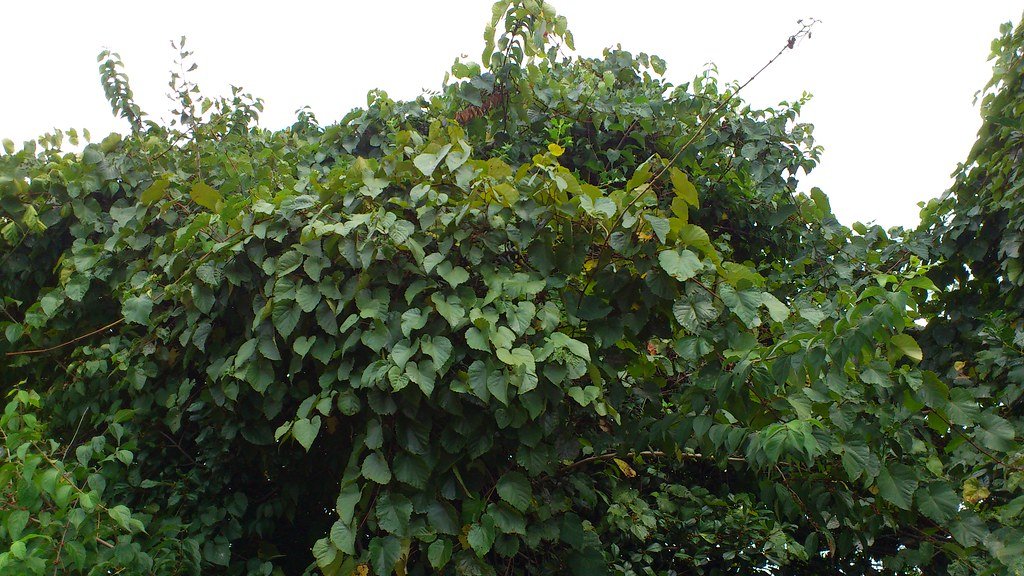
Mile-a-minute thrives in the modern world precisely because of how humans have altered the landscape. Areas that are regularly disturbed, such as powerline and utility right-of-ways where openings are created through regular herbicide use are prime locations for mile-a-minute weed establishment. Every road we build, every forest we clear, every utility corridor we maintain creates perfect habitat for this invasive species. Invades open disturbed areas, such as fields, forest edges, roadsides, rights-of-way, and ditches. Grows best in full sun, but will tolerate partial shade. The plant has essentially learned to exploit the scars we leave on the landscape, turning our infrastructure development into its expansion opportunities.
The Wetland Invasion Strategy

Water-rich environments provide mile-a-minute with both the moisture it craves and the perfect distribution network for its seeds. Mile-a-minute is widely known to be a rapid colonizer of wetlands and streambanks. These areas serve as natural highways for invasion, with streams carrying seeds for miles and depositing them in pristine wetlands that may have never seen this species before. It can also be found in areas with extremely wet environments with poor soil structure, and while it will grow in drier soils, mile-a-minute prefers high moisture soils. It will tolerate some shade for part of the day, but prefers full sun. The plant’s adaptability to different moisture conditions makes it nearly impossible to contain once it establishes in a watershed.
Wildlife Becomes Unwitting Accomplice
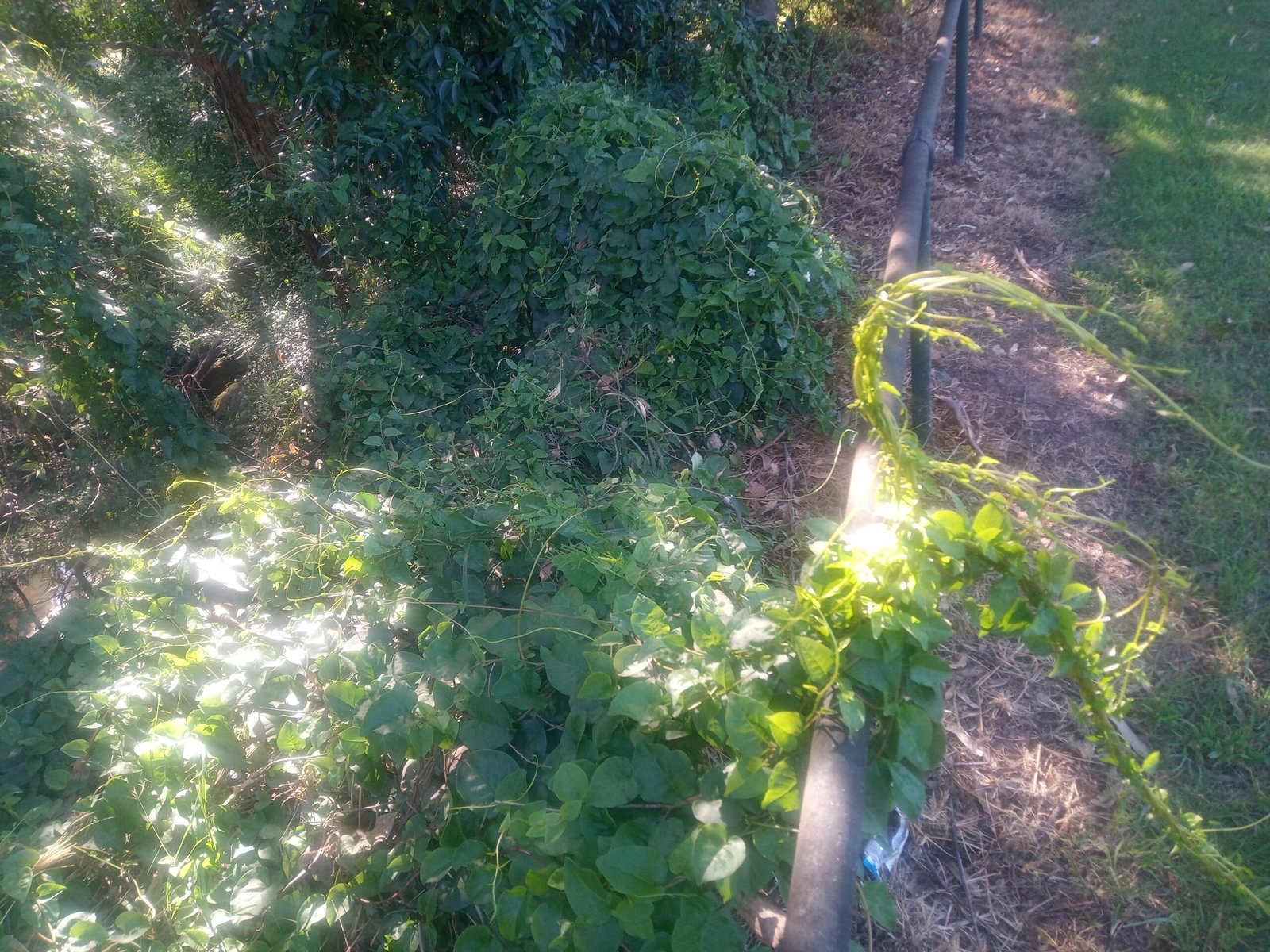
Perhaps most troubling is how mile-a-minute has recruited native wildlife to aid in its own invasion. Local bird populations are important for dispersal under utility lines, bird feeders, fence lines and other perching locations. Other animals observed eating its fruits are chipmunks, squirrel and deer. Every bird that eats the attractive blue berries becomes a long-distance seed dispersal agent, potentially carrying viable seeds miles away from the parent plant. These seed-carrying ants may play an important role in the survival and germination of the seeds. Even ants have been recruited into this biological invasion force, creating a multi-species conspiracy that helps mile-a-minute spread faster than any single organism could manage alone.
The Biodiversity Collapse
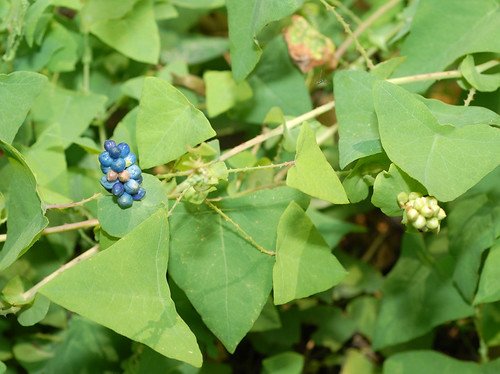
The ultimate cost of mile-a-minute invasion is the systematic replacement of diverse native ecosystems with biological deserts. Infestations of mile-a-minute weed decrease native vegetation and habitat in natural areas impacting plants and the wildlife that depend on those plants as well. Where once you might have found dozens of different plant species creating a complex web of ecological relationships, mile-a-minute creates monocultures – single-species deserts that support virtually no other life. Mile-a-minute is an aggressive weed, this rapidly growing plant reduces the biodiversity of native plants. The tangles of vine even climb on trees and form dense mats which block the sunlight, and due to the unavailability of the light, the tree cannot photosynthesize. The result is ecological simplification on a massive scale – the conversion of complex, beautiful, diverse ecosystems into green monotony.
The Battle for Light

At its core, mile-a-minute’s success comes down to a simple but ruthless competition for the most basic requirement of plant life: sunlight. It will tolerate shade for a part of the day, but needs a good percentage, 63-100% of the available light. The ability of P. perfoliata to attach to other plants with its recurved barbs and climb over the plants to reach an area of high light intensity is a key to its survival. The plant has evolved into the ultimate light thief, using its climbing abilities and rapid growth to position itself above native vegetation and steal their sunshine. The vine’s rapid growth allows it to smother existing vegetation and restrict light availability, potentially killing plants below. It’s biological warfare fought not with toxins or direct violence, but through the simple act of casting shadows.
Fighting Back: The Human Response
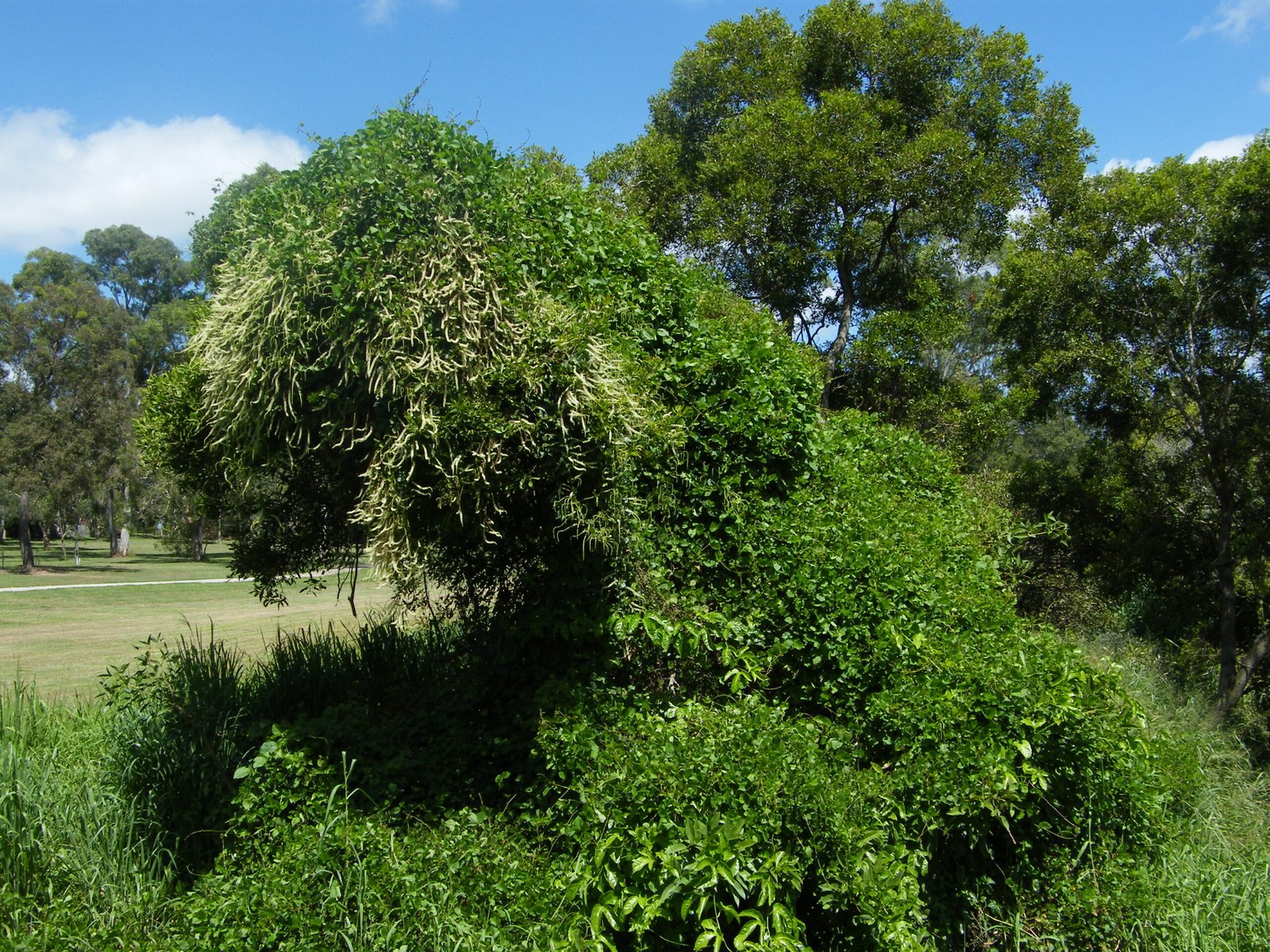
Despite the overwhelming challenge, land managers and scientists haven’t given up the fight against mile-a-minute. Due to its extended seed viability, it is unlikely you can eradicate mile-a-minute from a site, even with repeated effort. An alternate approach is investing effort in suppressing mile-a-minute long enough to release desired native vegetation to shade out mile-a-minute, with trees being the best option for a long-term shading approach. The strategy has shifted from complete eradication – probably impossible at this point – to long-term suppression and ecosystem restoration. For small populations (less than ¼ acre of mile-a-minute), control can often be accomplished by hand-pulling. The earlier the plants are pulled, the better: the barbs become sharper as the plant matures. Success requires incredible persistence and perfect timing, catching infestations when they’re small and vulnerable.
This botanical nightmare continues to spread across the eastern United States, transforming landscapes one vine at a time. While scientists work to develop better control strategies and deploy biological weapons like the mile-a-minute weevil, the plant maintains its relentless advance. The story of mile-a-minute serves as a stark reminder of how quickly a single species can reshape entire ecosystems when freed from its natural constraints. As

